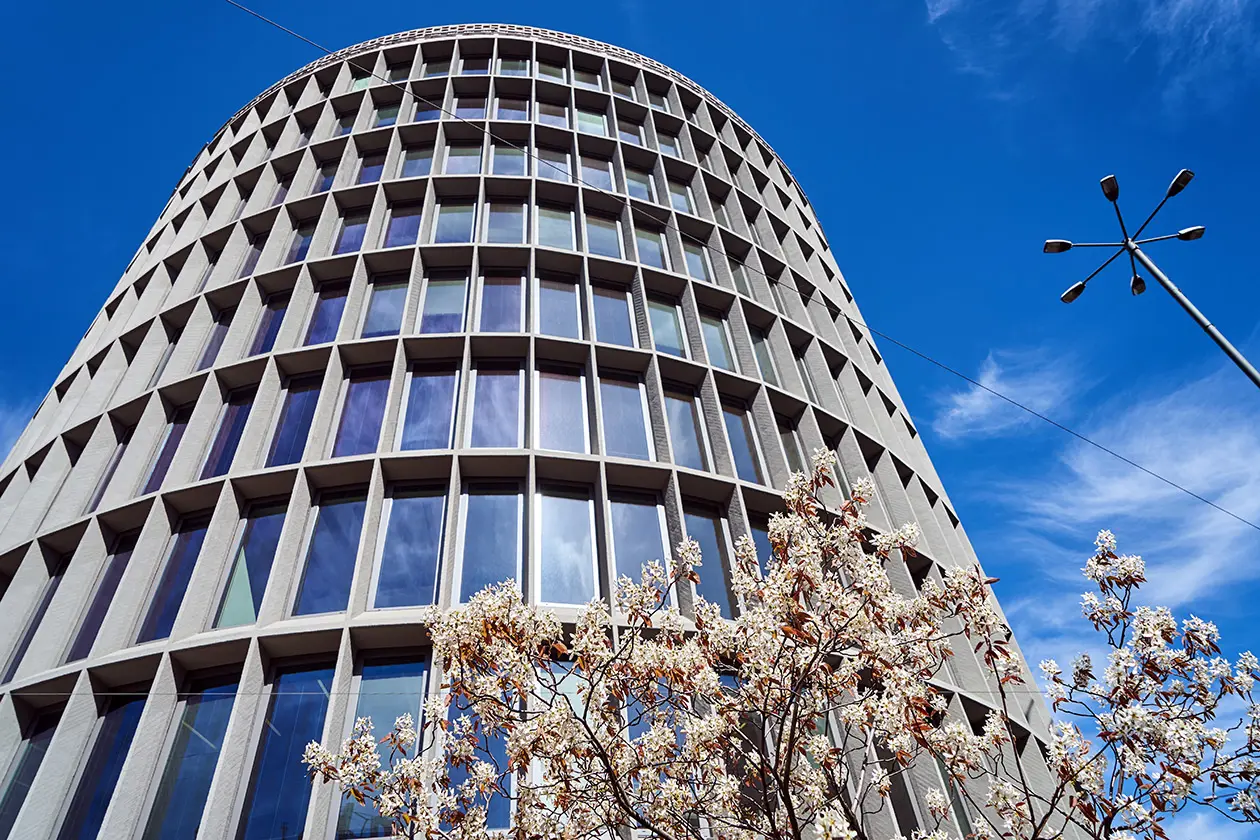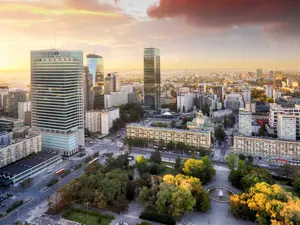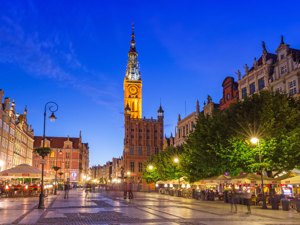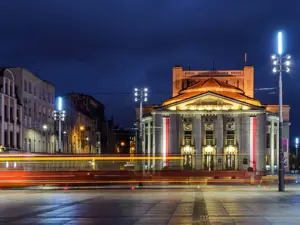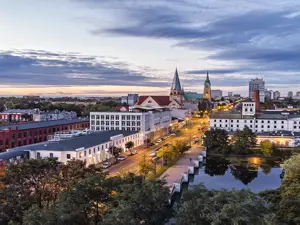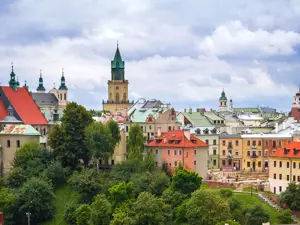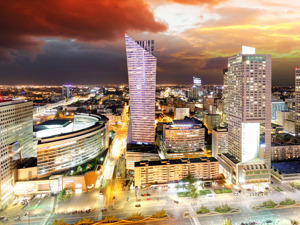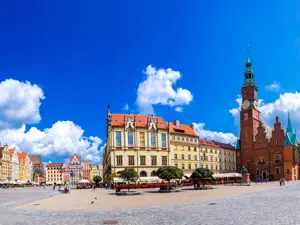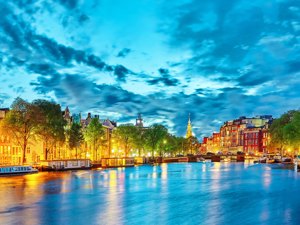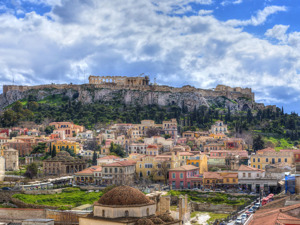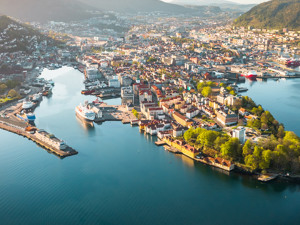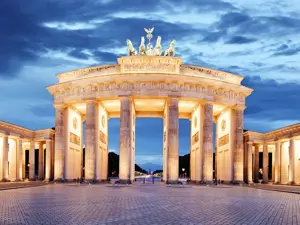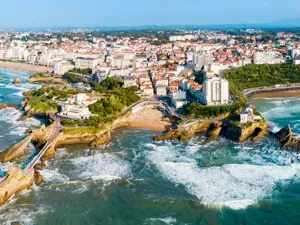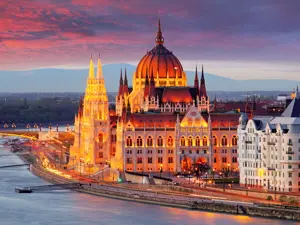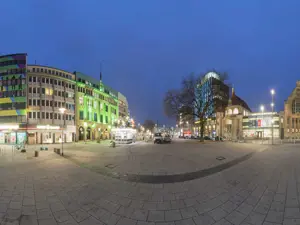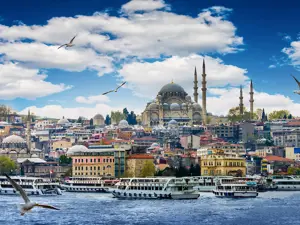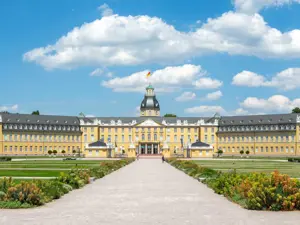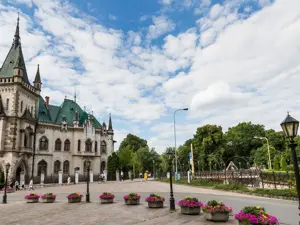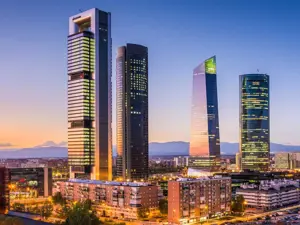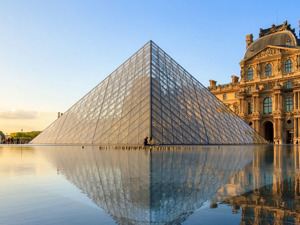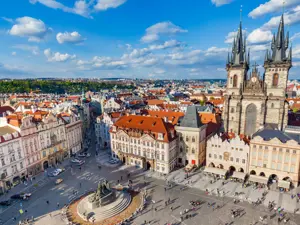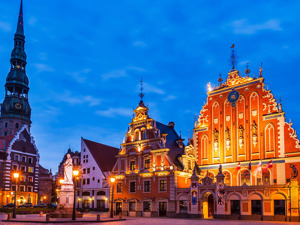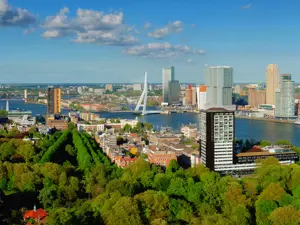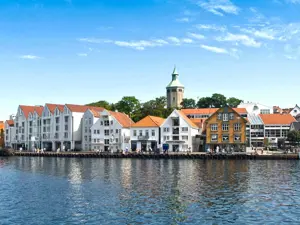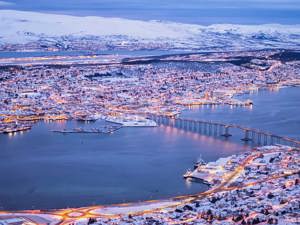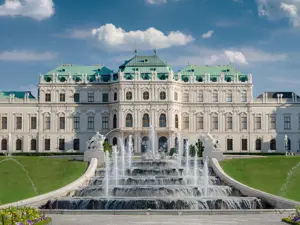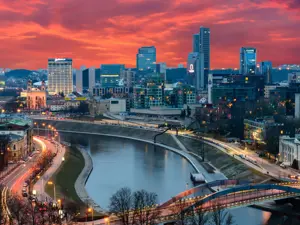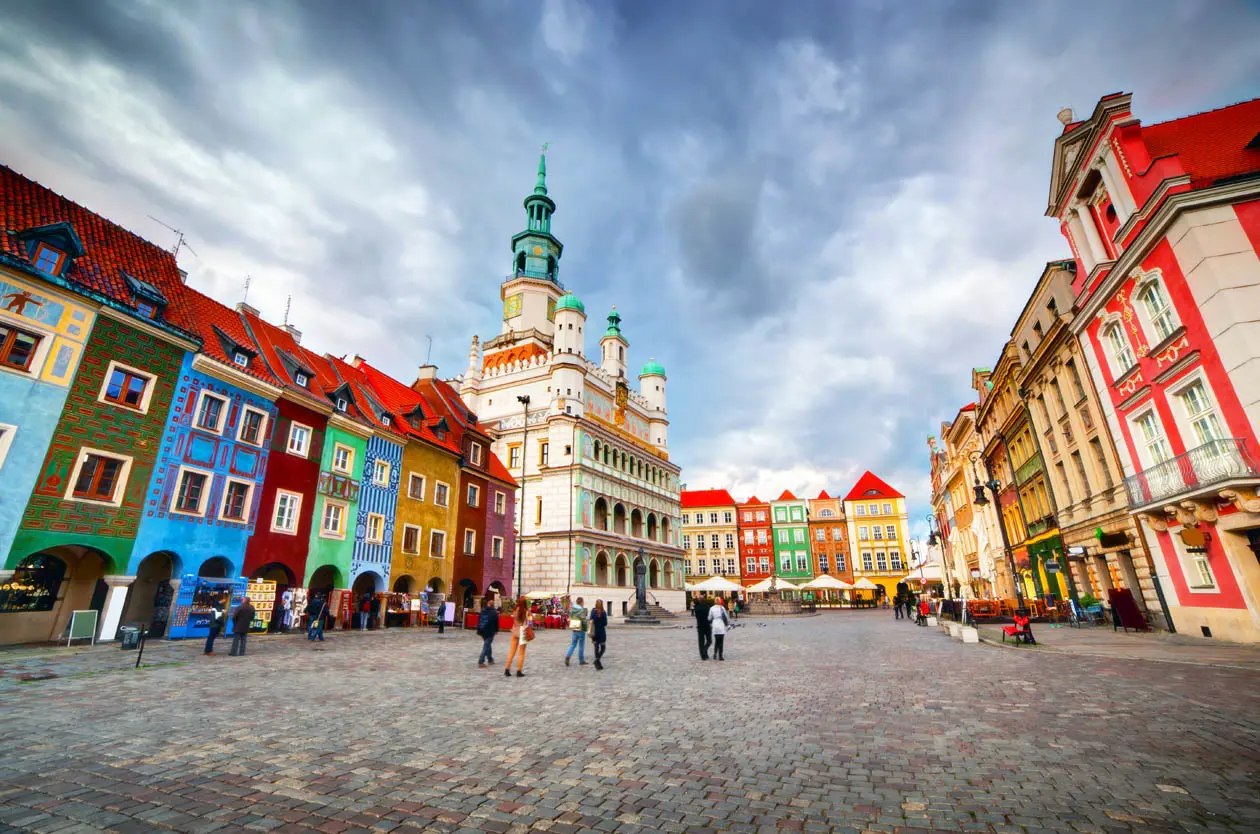
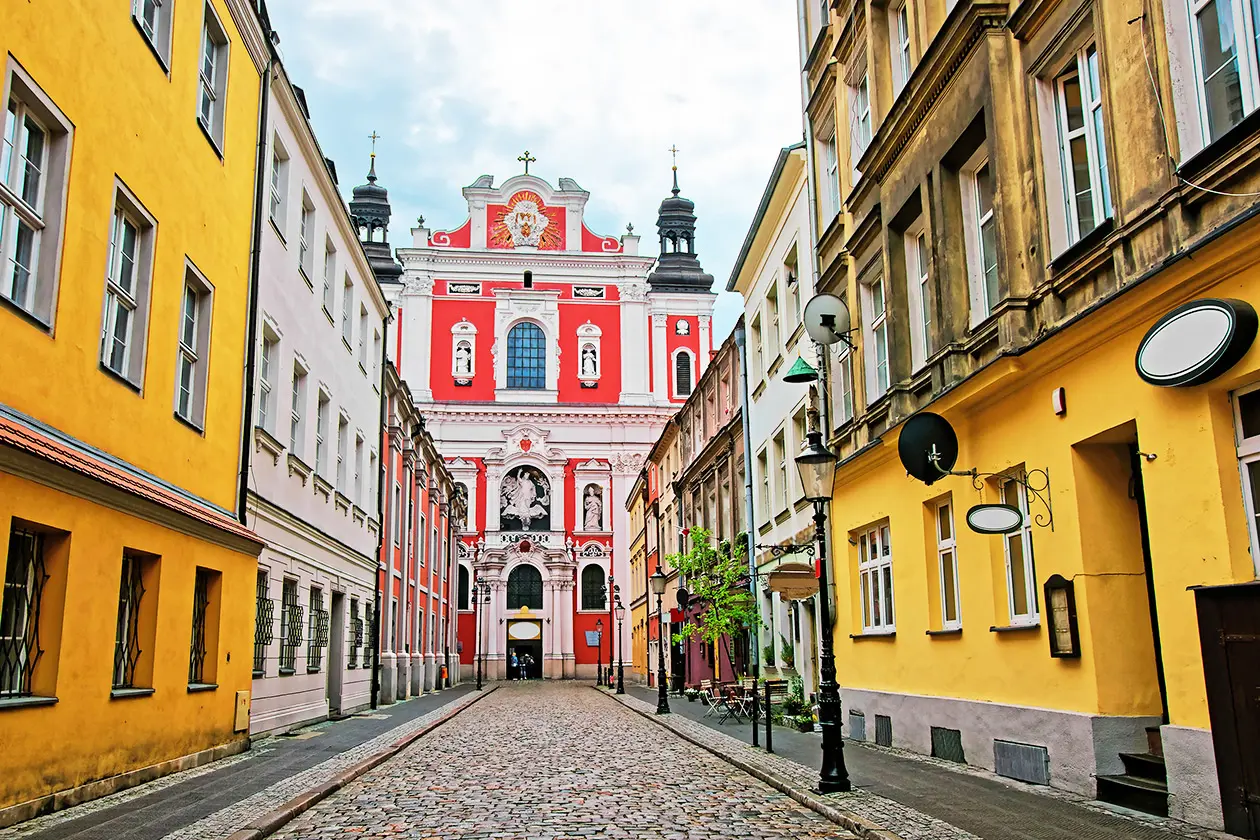
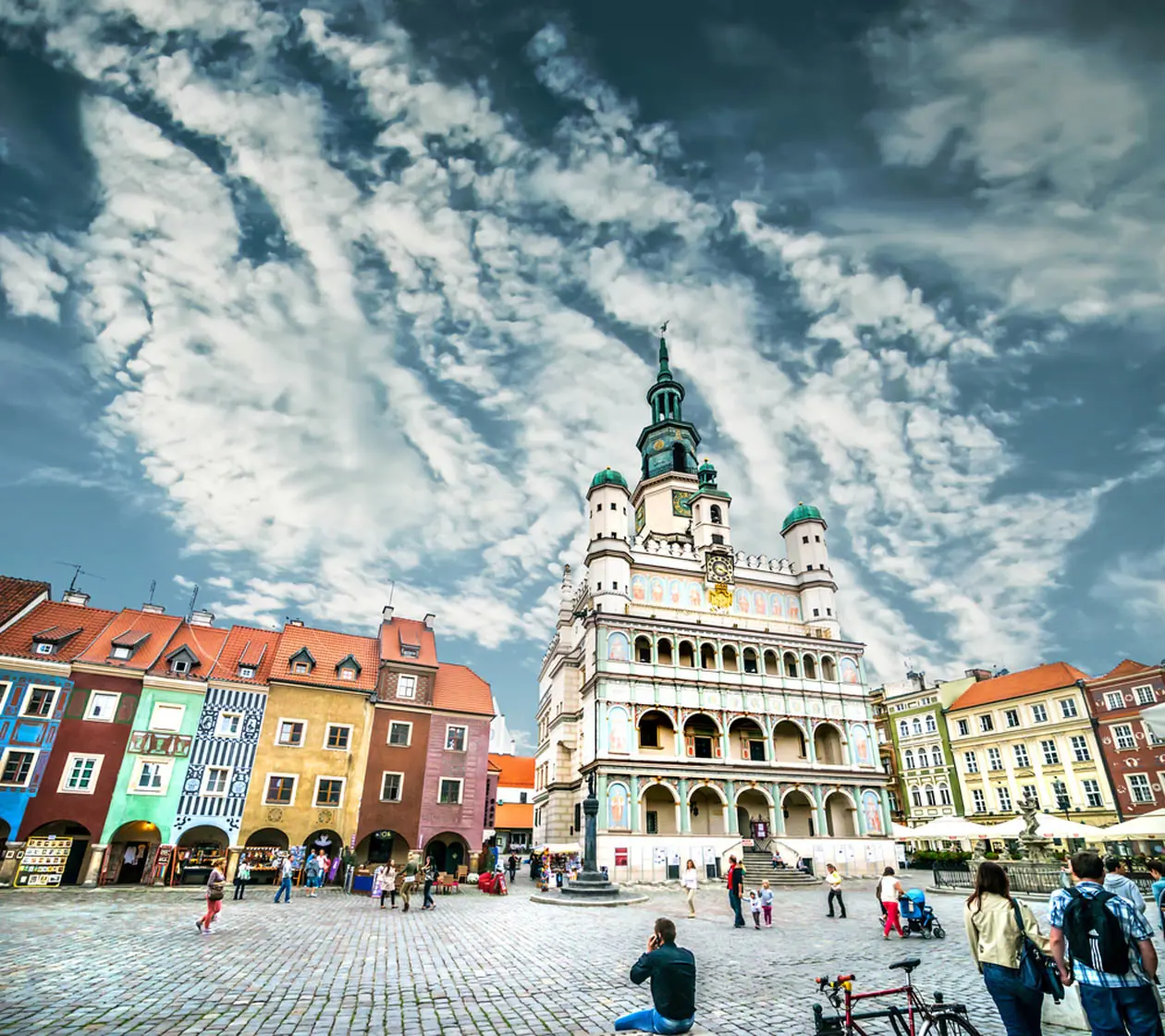
The town hall has a tower that is 61 meters high, open to the public, offering a panoramic view of the city and representing one of the most significant examples of Renaissance architecture in Central Europe.
A beautiful view of Ostrow Tumski, the old town, can be enjoyed from a height of 80 metres on the panoramic terrace of the Economics Academy building. Ostrow Tumski is home to the Cathedral of St. Peter and St. Paul, a tenth-century Basilica with Golden Chapel, which is the oldest royal burial place in Poland.
It is rich and varied and preserves ancient recipes, the result of the fusion of different cultures, which have diversified over the years in the various regions.
These are some of the typical dishes to taste: Zurek (rye flour soup accompanied by hard-boiled egg and salami), Barszcz bialy or czerwony (white or red beetroot soup), Bigos (soup with different types of meat, sauerkraut and spices), Kotlet schabowy (pork cutlet).

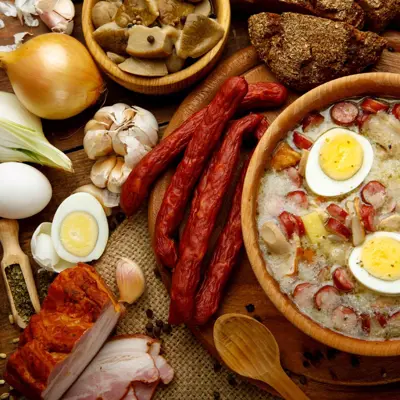

There is also Kotlet mielony (cutlet with minced meat), pierogi, flaczki (tripe), kluski ziemniaczane (similar to potato dumplings), placki ziemniaczne (potato pancakes ).
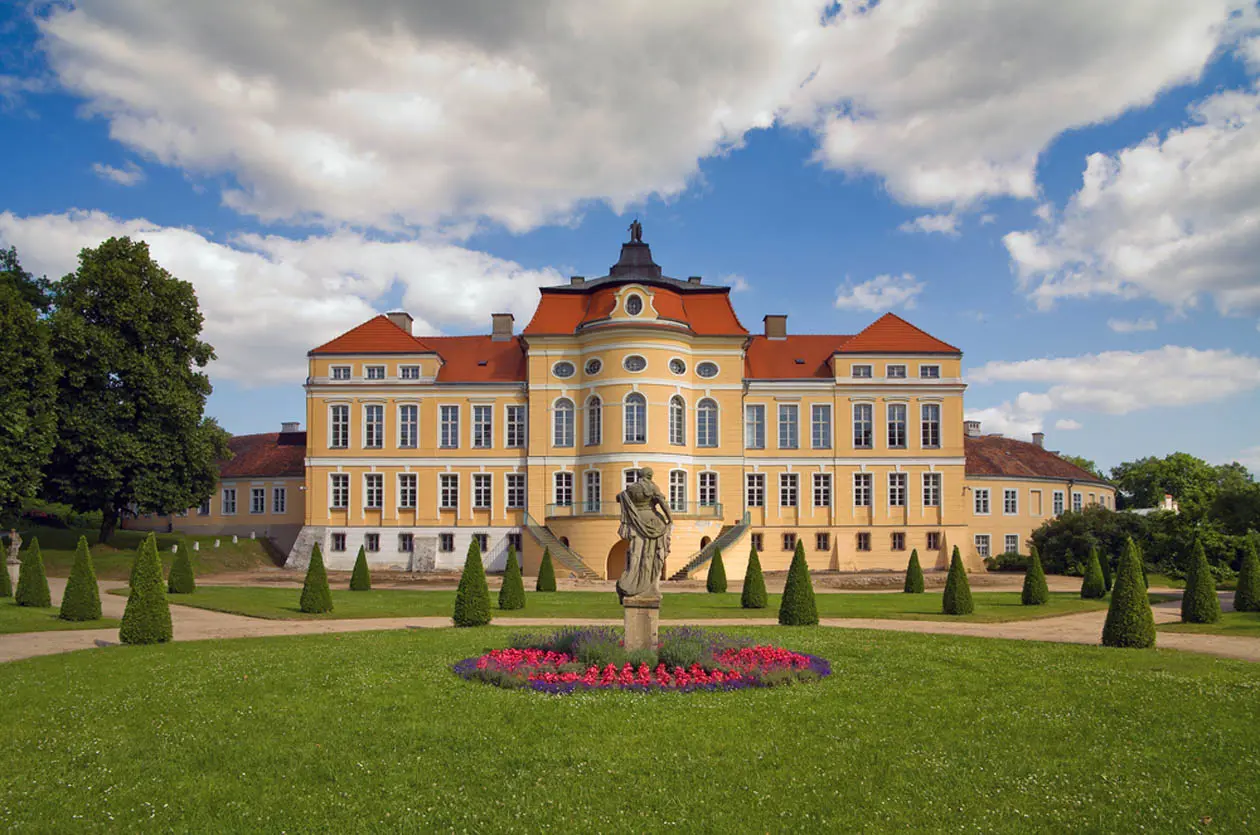
www.polonia.travel
Partnership with Booking.com
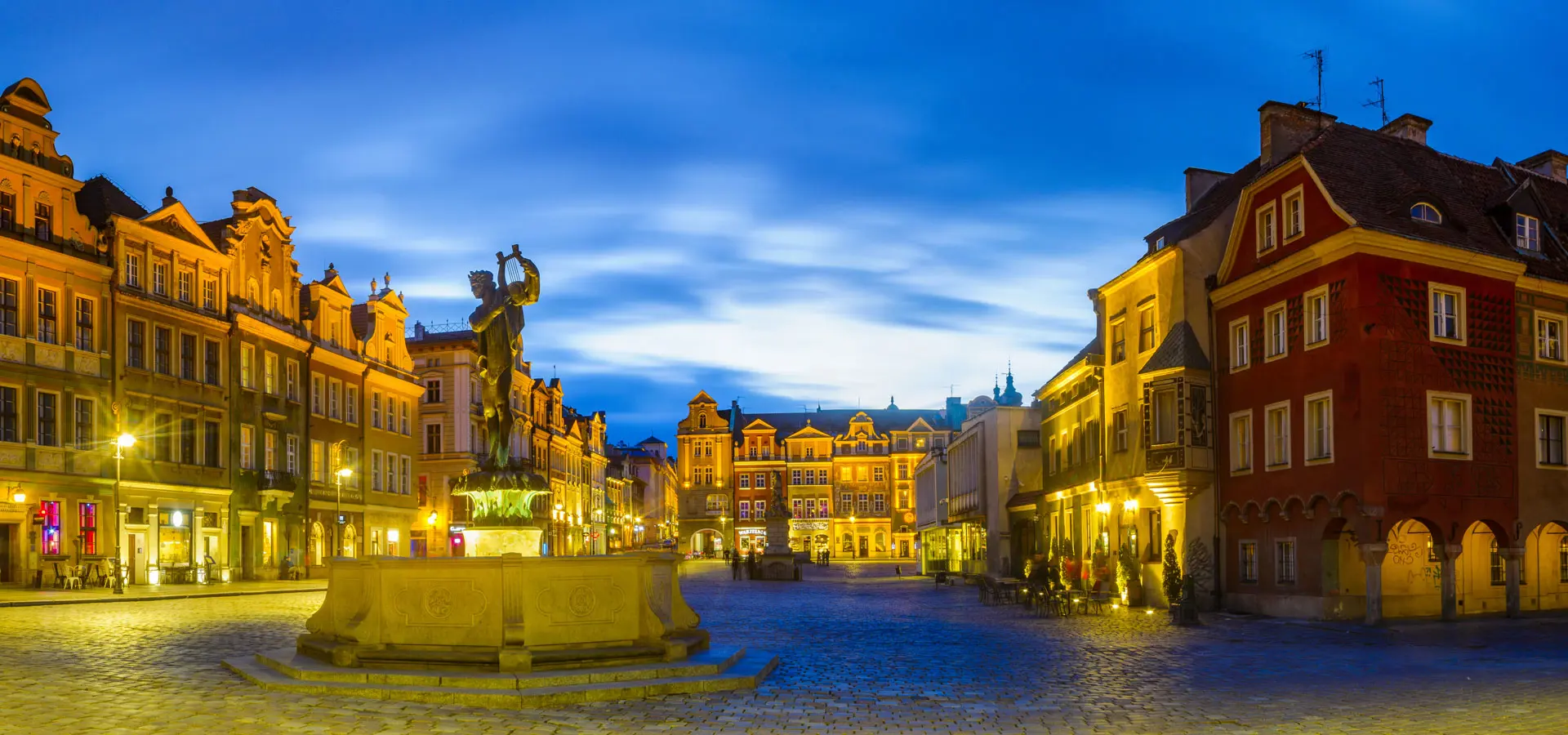
Poznan is a welcoming city and offers different possibilities for accommodation.
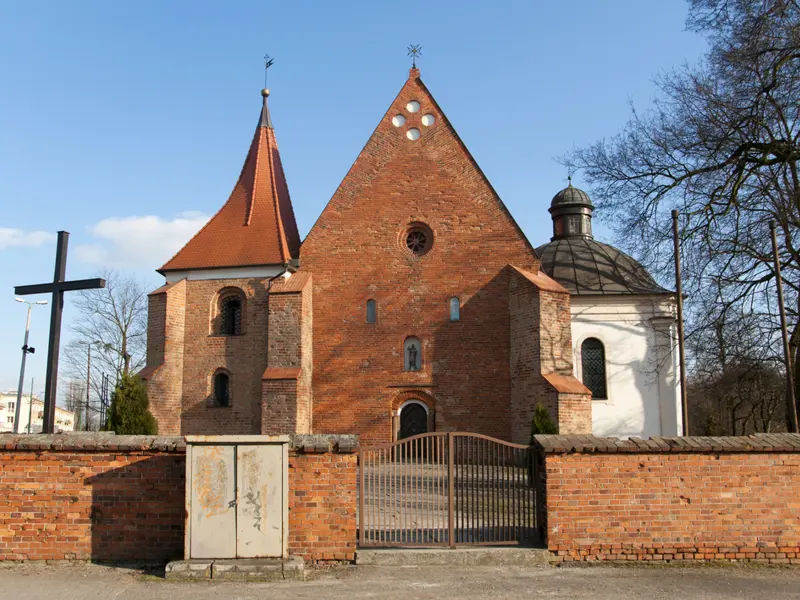
It is Poznań's second oldest shrine (after the cathedral) and one of the first examples of brickwork masonry in Poland. The groin vault in the presbytery is from the 13th century. The church was rebuilt in the Late Gothic style at the turn of the 15th and 16th century. A Gothic triptych from the early 16th century depicting St. Mary engaged in conversation with St. John the Baptist and St. Stanislaus in the central panel. Worthy of notice is the Late Gothic stone baptismal font from 1522.
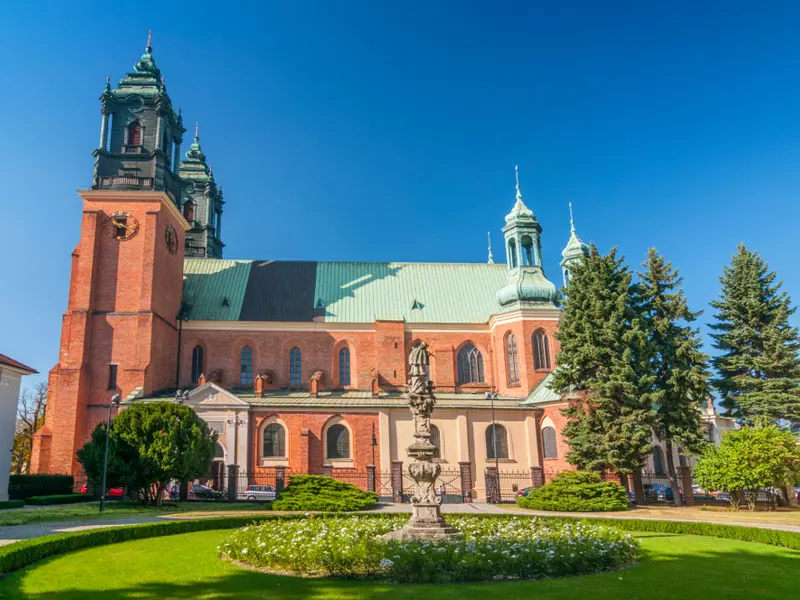
The shrine was damaged in the years 1038-39 and rebuilt in the following years in the Romanesque style. In the 13th century an early Gothic presbytery was erected and in the mid-fourteenth century a new Gothic nave was built, during which a new presbytery with a chevet and a row of chapels was added. In the 17th century the church was rebuilt in the Baroque style. The church was damaged in a fire in 1772 and given a new interior that survived until 1945. The façade was rebuilt in 1779 and the old cupolas were replaced in 1790.
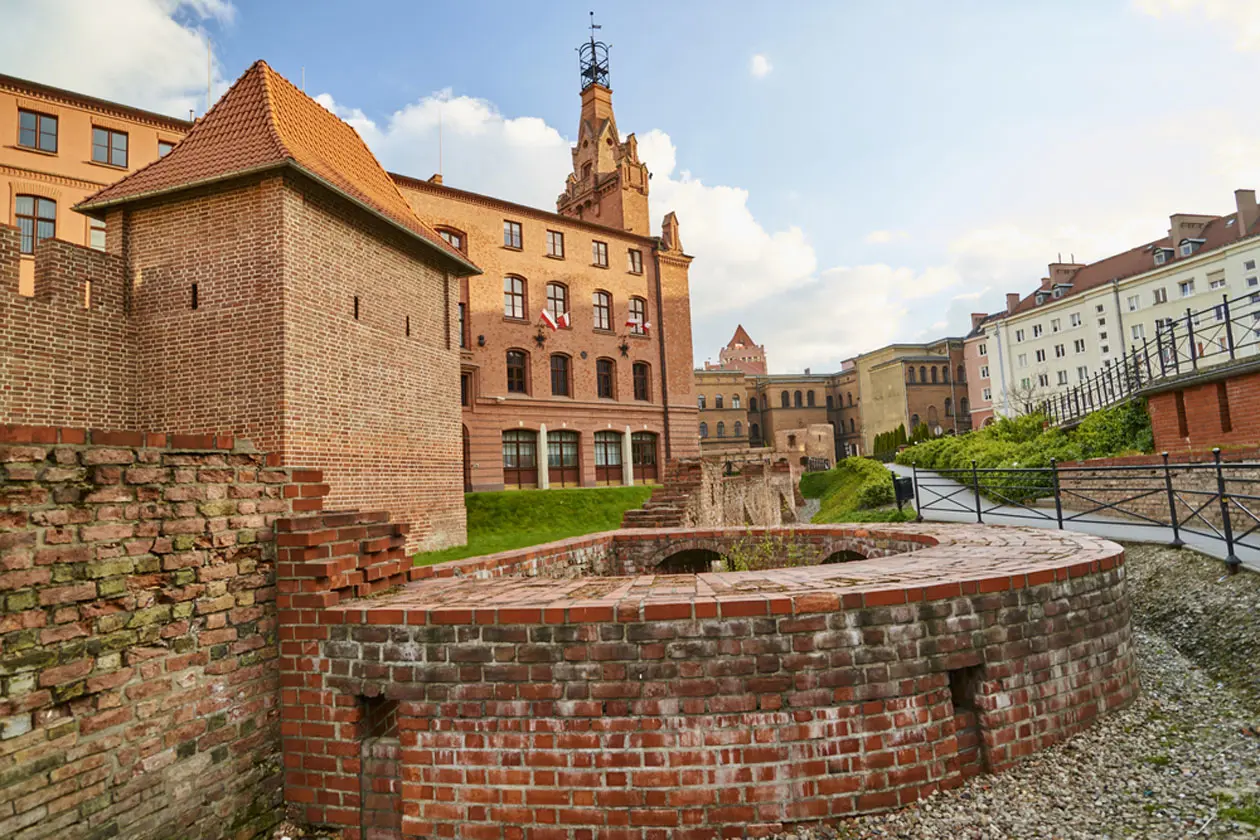
Fortifications were a manifestation of the importance of a medieval city. They reflected the military power of the city and its role and function in the defence system of the country. The city could be accessed through four gateways: the Wroniecka Gate from the north, the Wielka Gate and Wodna Gated from the east and the Wrocławska Gate from the south. With the development of warfare technology the defensive system of the city was modified several times and eventually completed in the early sixteenth century.
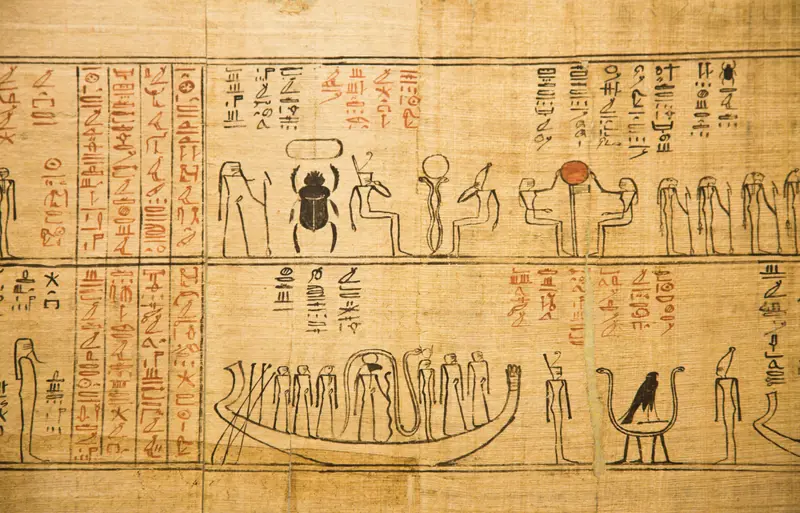
The permanent collections of the museum include the Prehistory of Wielkopolska, Life and Death in Ancient Egypt and the Archeology of Sudan. The Prehistory of Wielkopolska features archeological finds illustrating the ancient history of Western Poland. The Life and Death in Ancient Egypt collection illustrates papyrus and hieroglyphic writing, the evolution of Egyptian art, worship and funeral rite objects (including mummies).
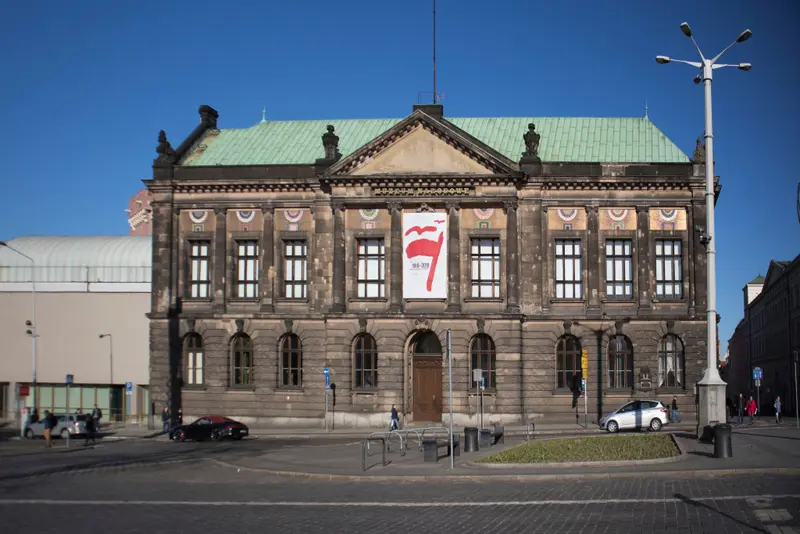
Established in 1986, the Museum houses artifacts of Wielkopolska folk culture. The permanent exhibition entitled Folk Art in Wielkopolska features 19th and 20th century sculptures, paintings, folk costumes, embroidery, decorative items, worship objects and musical instruments. The items are grouped into four categories displayed in Textiles and Folk Costumes, Folk Art, Technology and Non-European Cultures Sections.
The Museum was set up in the flat where the poet Kazimiera Iłłakowiczówna lived. Kazimiera Iłłakowiczówna was a Polish poet, prose writer and translator. Started writing poetry in 1905 and received the national poetry award in 1935. The studio is divided into 2 sections. The first contains an exhibition of literary and iconographic materials and mementoes of the poet's life. The second part of the studio is an authentic mock-up of the interior of the poet's flat.
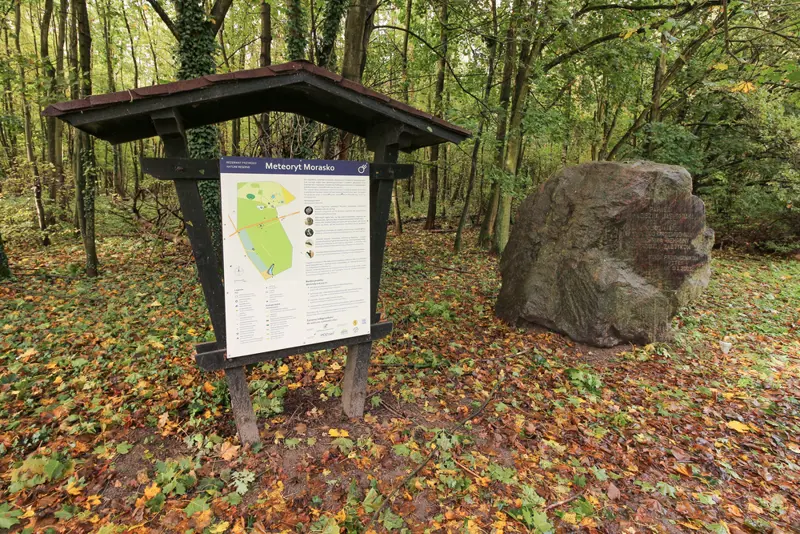
In the city's borders we found an area of high natural value. It is a group of meteorite impact craters on the slope of Mount Morasko (Góra Moraska). This area of 55 hectares became a nature reserve in 1976. The craters in Morasko are one of the largest groups of craters on the planet. The biggest crater's diameter is around 60 metres while its depth reaches 11.5 metres.
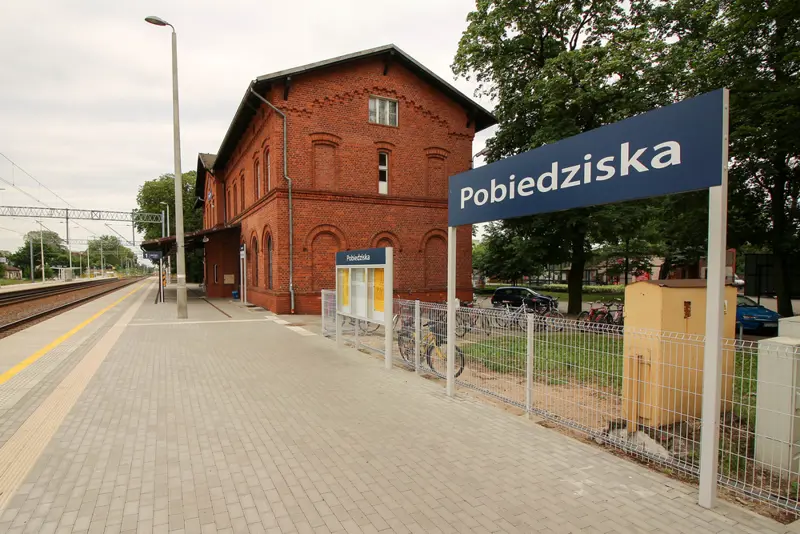
Established in 1993, it is the park in the Province of Wielkopolska. A unique feature of the park is the habitat of swamp sawgrass on Lake Drążynek, which is considered the largest in the region of Wielkopolska. The Park includes Promno Leafy Forest, Lake Dębiniec, and Lake Drążynek nature reserves and is located about 2 km south from Pobiedziska. It is easy accessible on foot from Promno and Pobiedziska railway stations.

